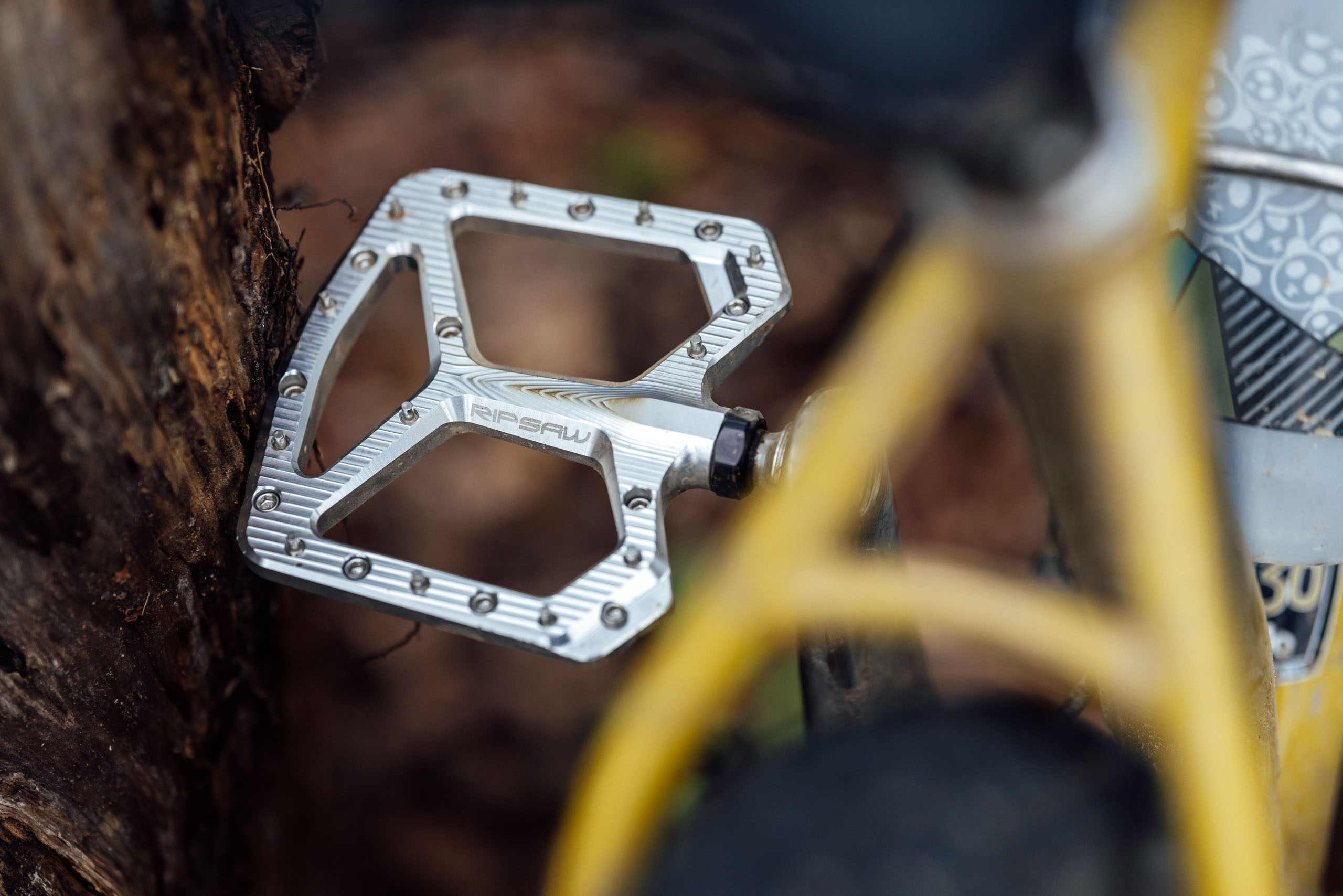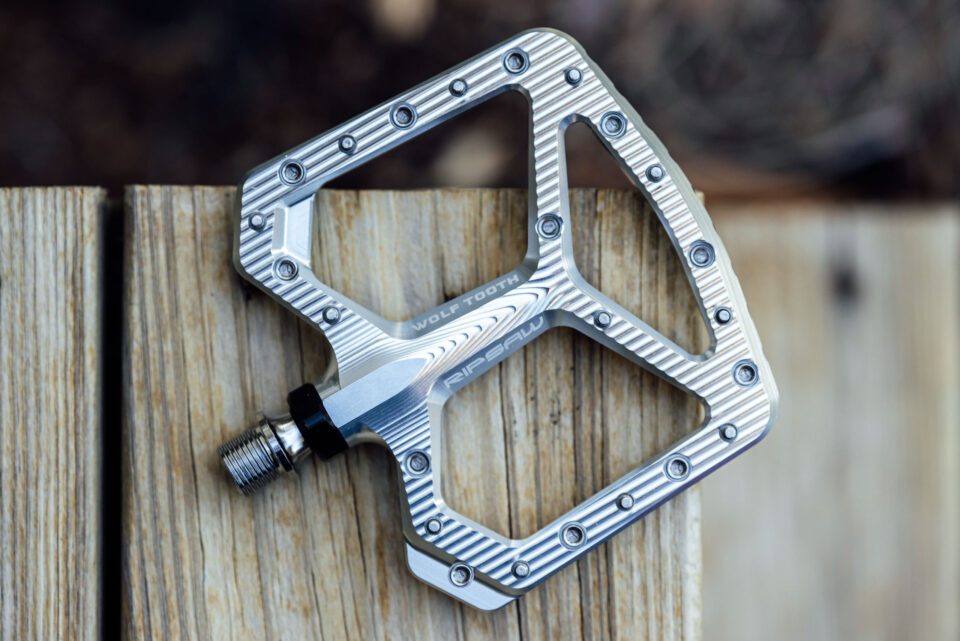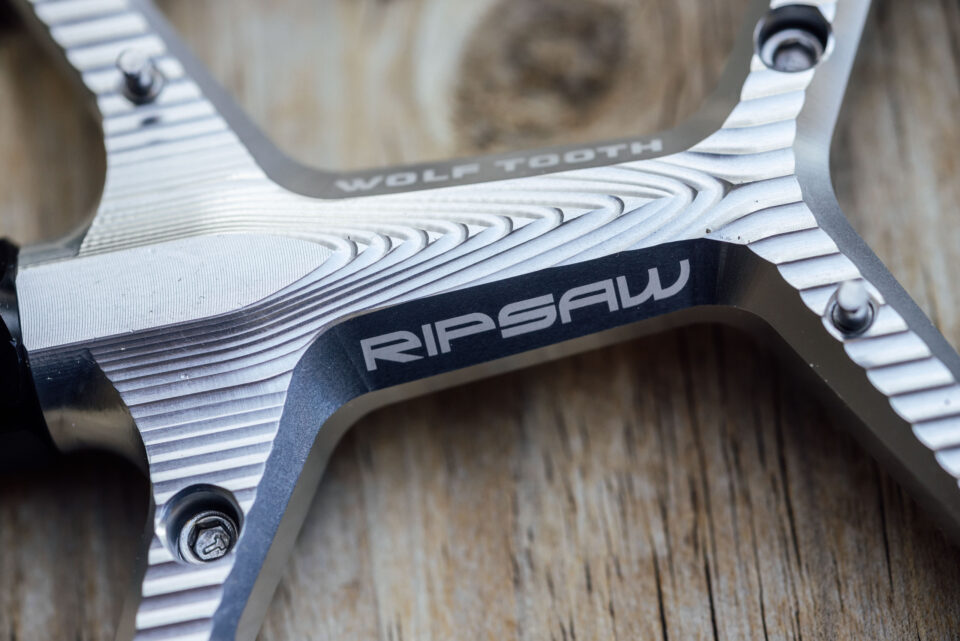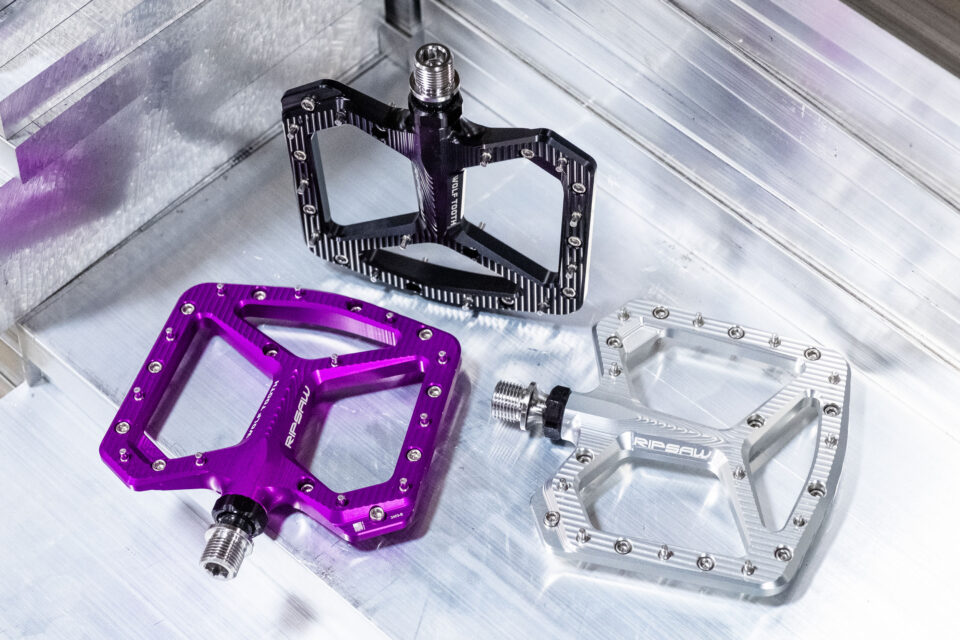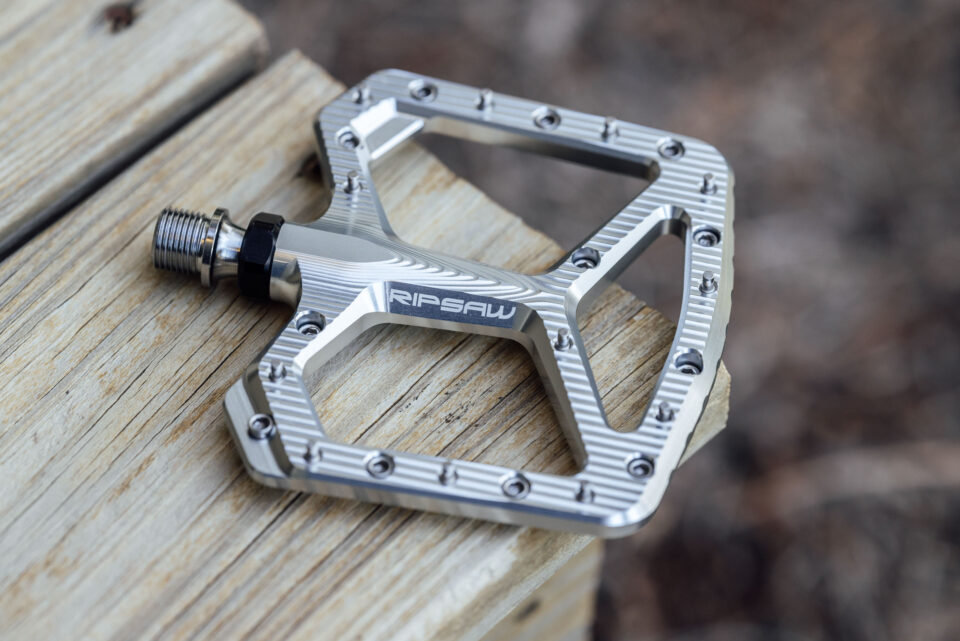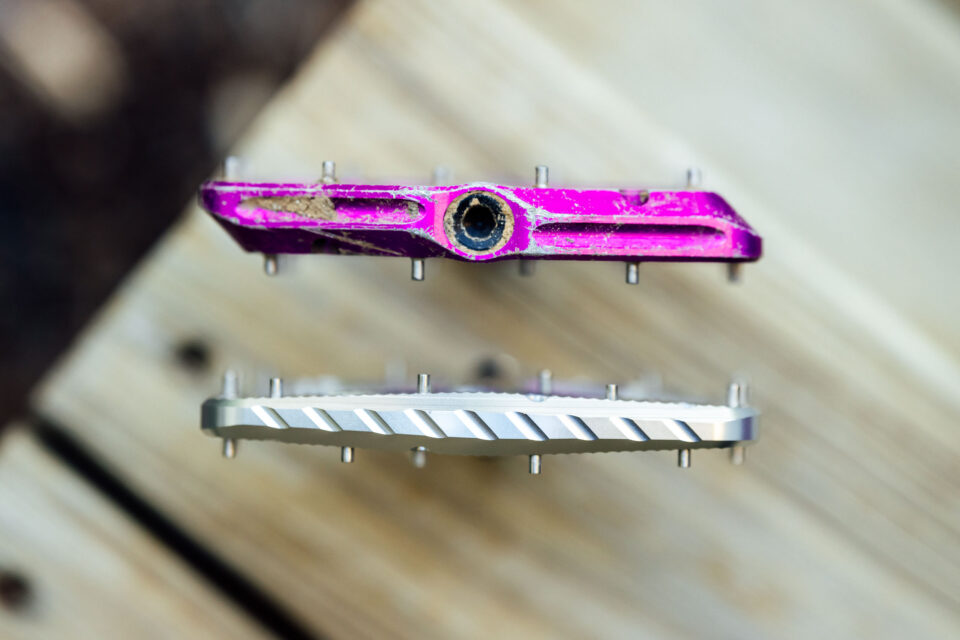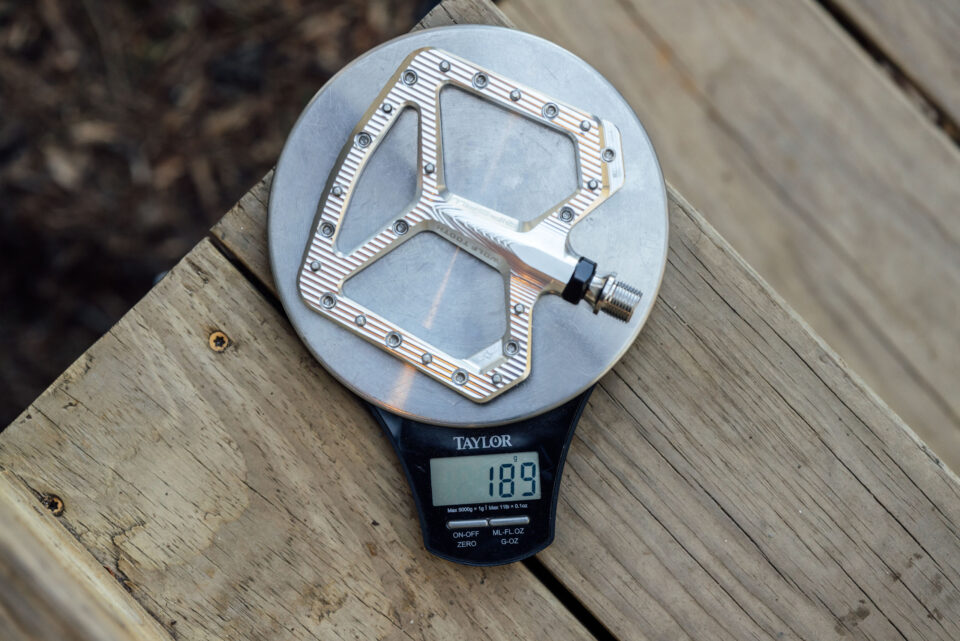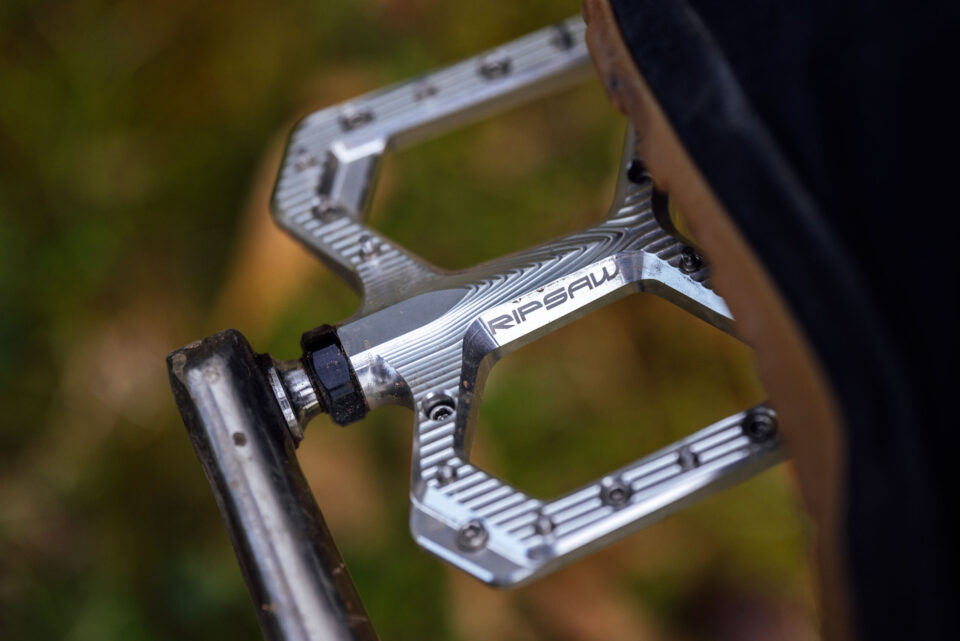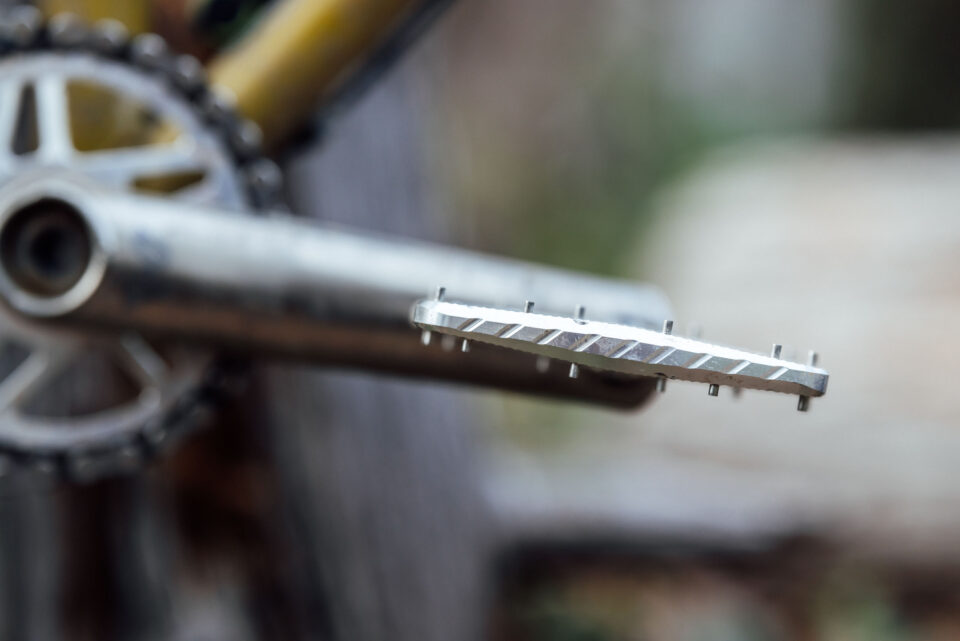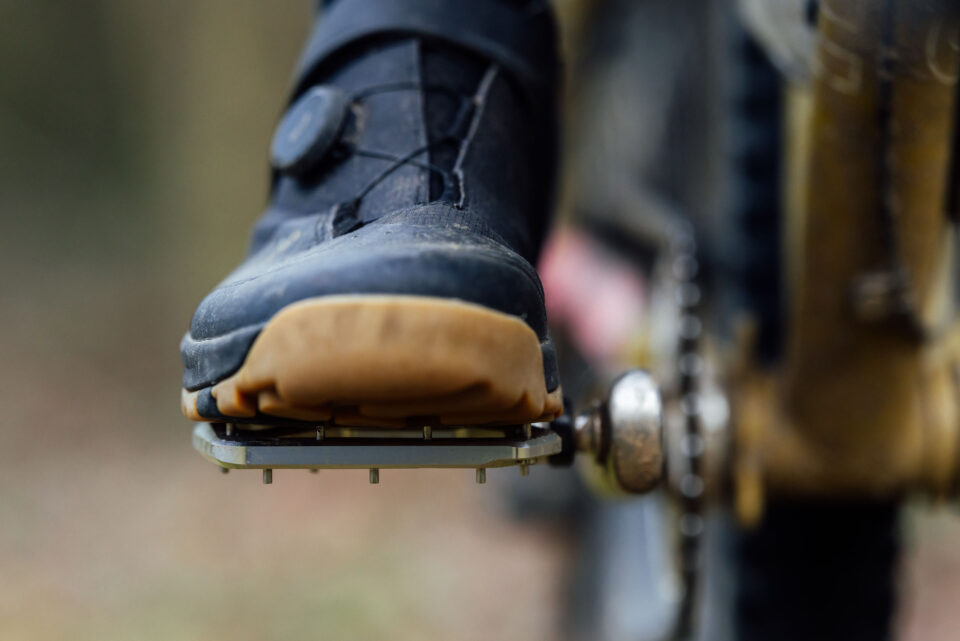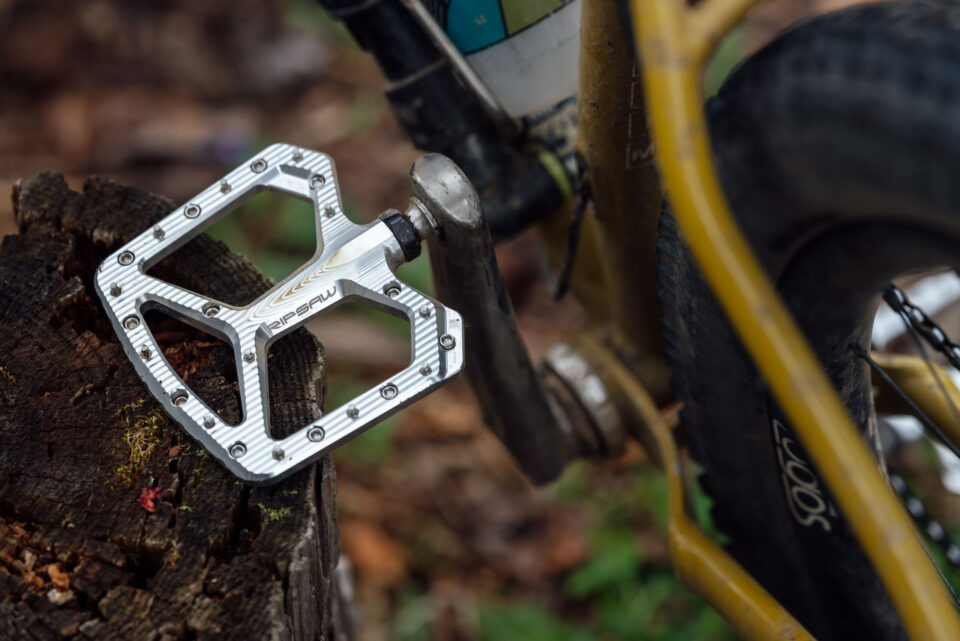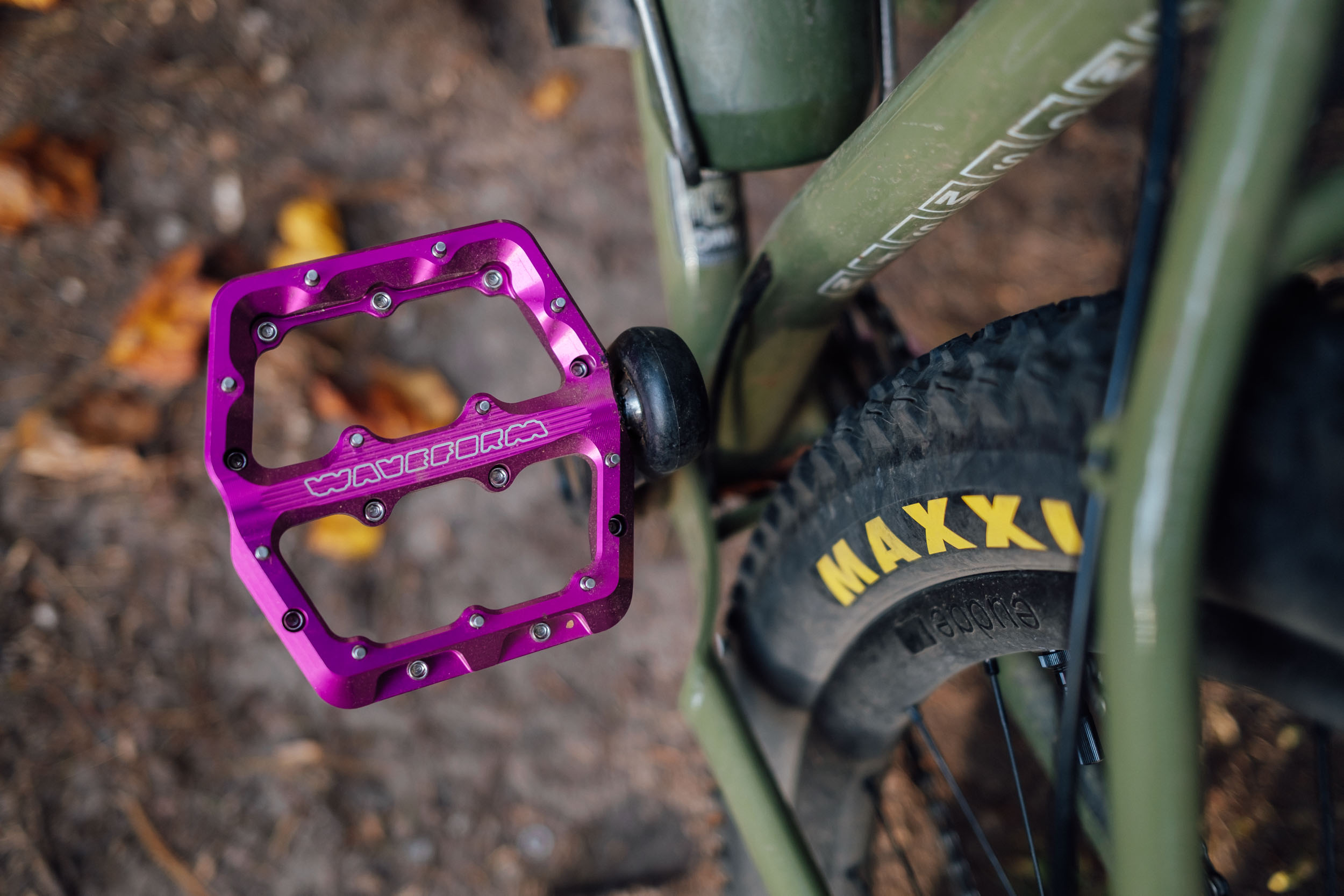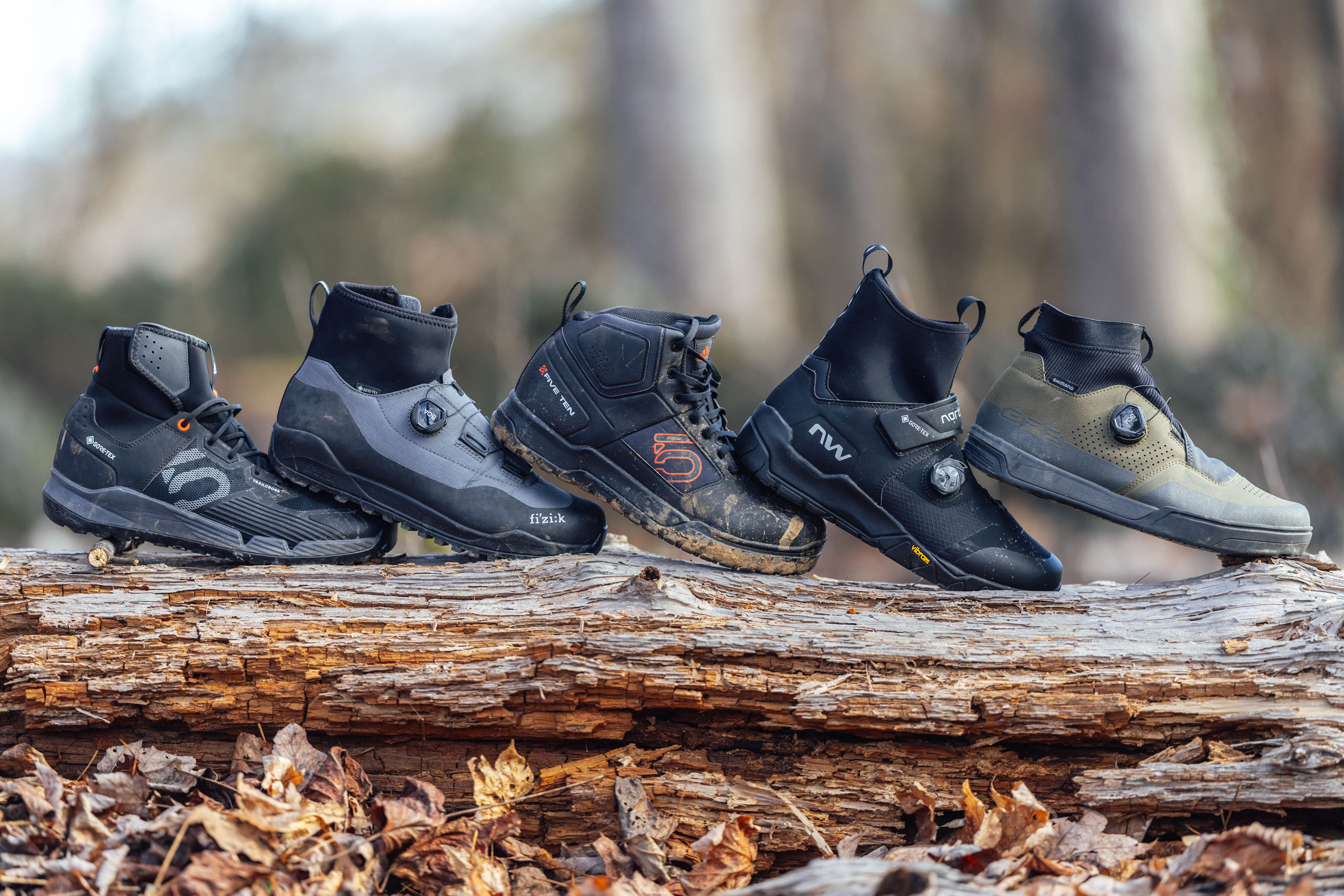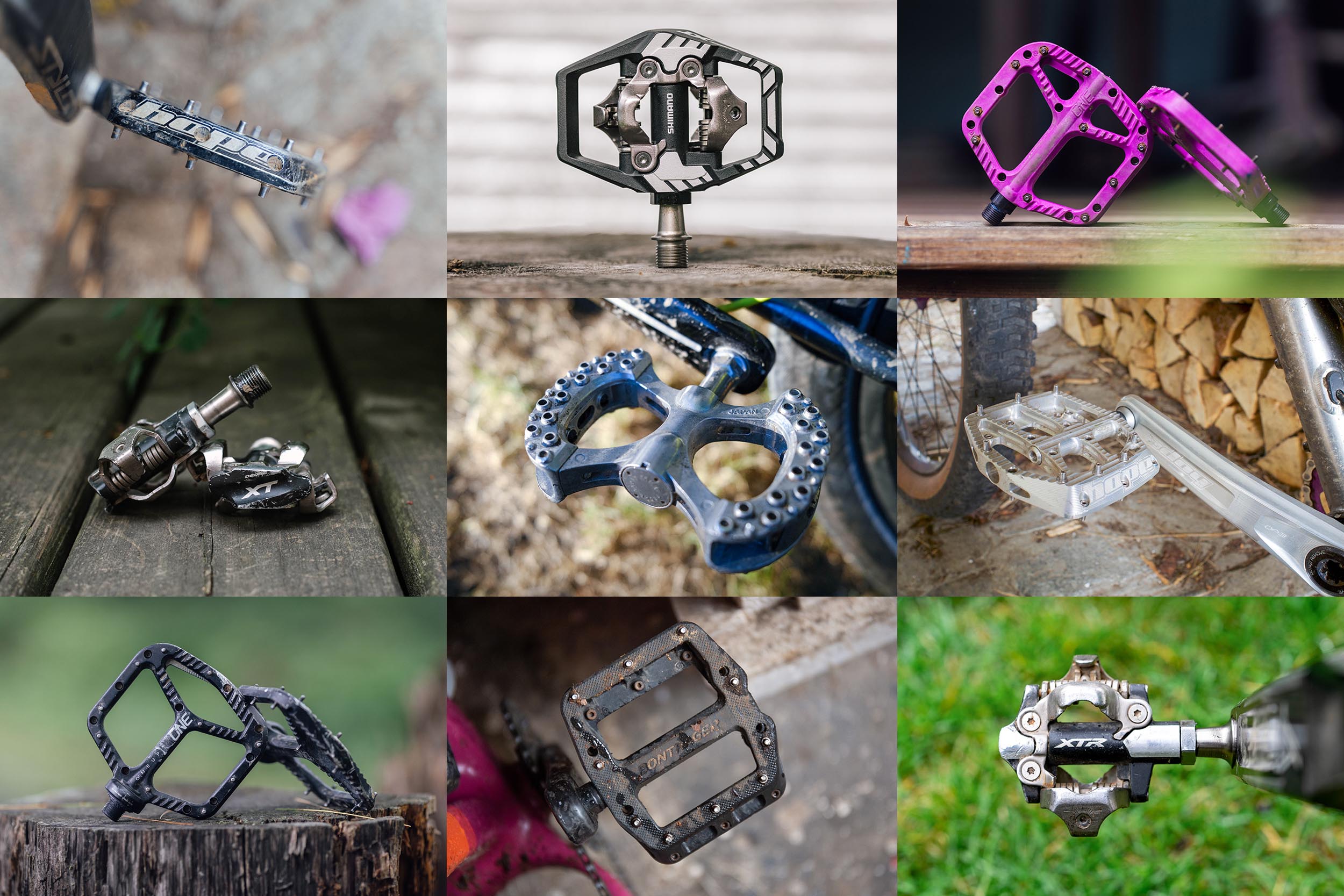Wolf Tooth Ripsaw Review: Convex vs. Concave
Share This
Just announced, the new Wolf Tooth Ripsaw is the brand’s second in-house-made aluminum flat pedal. However, with its convex platform profile, unique design, and interesting contours, the Ripsaw is completely different than the Waveform. Logan’s been testing a pair for a few weeks for this review…
Only a year and a half after the release of their debut platform pedal, Wolf Tooth doubled its pedal lineup to meet the needs of more riders: mid-footers, to be specific. Similar to their Waveform, the new Wolf Tooth RipSaw is a machined-in-Minnesota aluminum flat pedal with a slim, lightweight design, but instead of a concave platform, the Ripsaw has a slight convex profile and a few other distinctions. I had the chance to put some solid miles on a pair and compare the two prior to the release for this review.
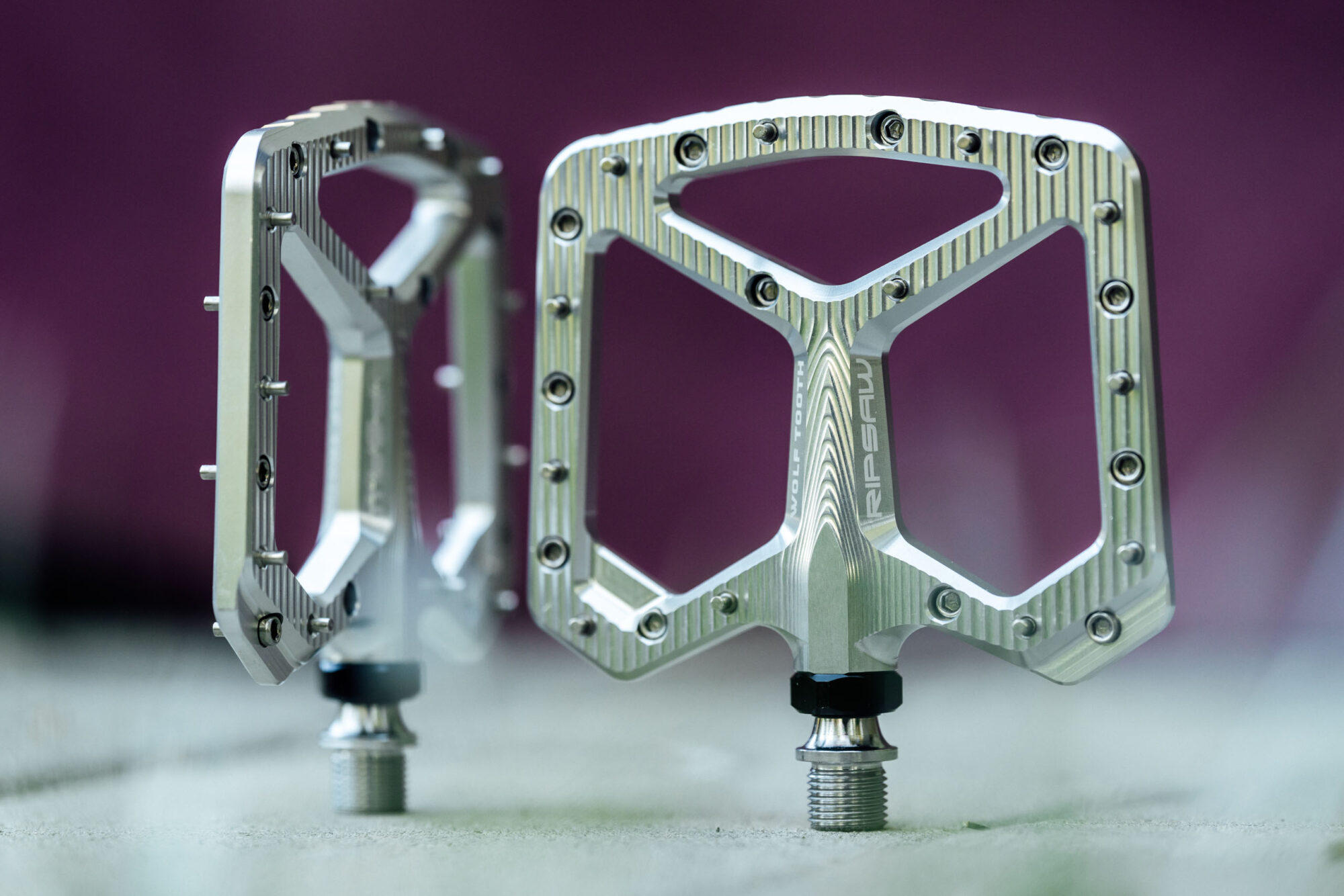
If you’ve ever seen rough-cut lumber, you’ll understand where the new Ripsaw Aluminum Pedal got its name. Or perhaps Wolf Tooth named it first and then came up with that beautifully-machined pattern. Either way, the Ripsaw’s 118mm x 102mm platform is a sight to behold. According to Wolf Tooth, each pedal body begins as a solid 6061-T6 aluminum billet before spending almost 40 minutes in a CNC mill. Like their Waveform pedals, the Ripsaw is designed, engineered, machined, and assembled at Wolf Tooth in Minnesota.
In addition to the aluminum platform and 24 stainless steel rear-loading 4.5mm pins, each Ripsaw pedal features a 17-4 stainless steel axle, three sealed cartridge bearings, and one Igus bushing with a custom radial seal to protect internal components from dirt and debris. That makes 33 individual components once you factor in the axle hardware. Before we dive in to what makes them different and how they perform, here’s the quick and dirty:
- One size: 118mm long x 102mm wide
- Twelve stainless steel, rear-loading grip pins on each side
- Six extra grip pins included
- Three colors: Black, Raw Silver, Ultraviolet Purple
- Replacement parts and service guides available via Wolf Tooth Right to Repair
- Five year warranty
- Exceeds all ISO safety standards
- Machined and assembled at Wolf Tooth in Minnesota, USA
- Retail price is $199.95 USD
Waveform vs. Ripsaw
Generally speaking, the new Ripsaw and Waveform pedals are made to complement one another. Ripsaw Aluminum Pedals are simply another option for riders who want a different style of pedal, which I’ll go further into later. From a structural standpoint, the Ripsaw axle system is very similar to Waveform with its inboard bushing and triple outboard bearing setup. The differences in the axle system are related to the shape of the pedal body itself. Wolf Tooth wanted a completely closed, continuous outside edge on the Ripsaw. The alloy “cartridge” that screws in from the inboard side of the pedal body and secures the axle made that design goal possible.

The Waveform and Ripsaw are roughly the same weight: 387 grams per pair and 378 grams, respectively. Aside from the pin count variance—Waveform has 11 per side and Ripsaw has 12—the main distinctions between the two are in the platform. As you can see in these photos, the Ripsaw appears to be a little bigger. However, at 118mm long x 102mm wide it’s not that different from the size large Waveform, which measures 112 x 106mm. Waveform is also available in a size small 105 x 99mm platform, for the record. The Ripsaw is a little longer and a hair narrower, all told. It has a slightly wider Q-factor, however, which might be an important consideration for folks looking for a long-ride worthy pedal who are sensitive to foot placement width. All that said, the most significant difference between the two is the pedal platform profile.
Convex vs. Concave Pedals
As many of you know, the shape of most flat pedals isn’t really flat. Some, like the Waveform, are concave with a thinner profile at the spindle that gets thicker at the front and back of the platform. Others, such as the Wolf Tooth Ripsaw reviewed here, are convex and taper from the center to a thinner profile at the ends. The Ripsaw is 12.5mm in the middle and 7mm thin at the fore and aft edges of the platform.
The general rule of thumb is that most people who ride with the arch of their foot over the axle are better suited to a convex pedal body and folks who tend to place the ball of their foot over the axle prefer a concave platform, which makes logical sense. The theory is that a concave platform cups your shoe and is more effective with the ball of the foot at the center of the platform (over the axle). Conversely, a convex platform allows the shoe to wrap or cup the pedal, which functions better when the foot is positioned with arch over the spindle. There are additional opinions, like the idea that a convex platform makes it easier for riders to swap between multiple foot positions while pedaling. And some people believe that concave platforms provides a more secure feeling, whereas a convex shape offers more comfort.
It’s not really that cut and dry. I think all of that’s true to some degree, but there’s more to it, including the number of pins, pin placement, and the length and type of pins—not to mention shoes and platform size. These factors arguably have more to do with grip, comfort, and ease of foot placement than the profile of the pedal platform. That being said, I like that there are options. I usually position my feet somewhere in between the two defining placements; I guess I’m not quite a ball-of-foot rider and not exactly a mid-footer. Maybe I’m a mid-baller? Either way, anything I write about pedal shape is based entirely my own experience and if you don’t know where you stand (on the pedals), by all means, try different options. As a matter of fact, two of my favorite pedals to date are the OneUp Composite pedal, which has a convex platform, and the Wolf Tooth Waveform, which is concave. Oddly, I ride both interchangeably, and like them equally the same, although I’ve historically put more miles on the OneUp.
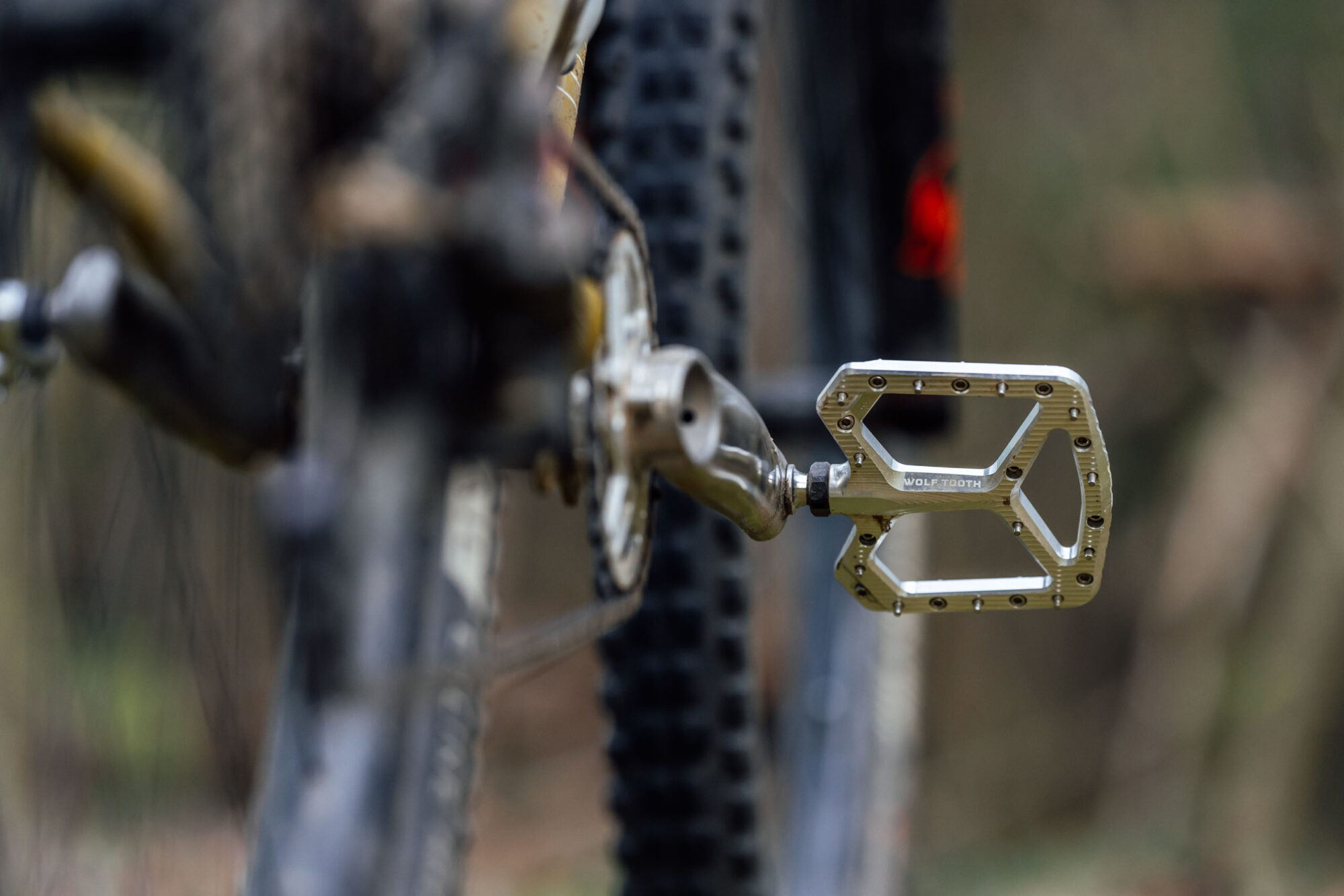
On the Trail
I’ve tried the Ripsaw with two different pairs of shoes and used them on a few rides mounted to a trail hardtail. One of those rides was a raucous multi-trail all-day affair following a friend of mine who’s unquestionably faster than me. That meant I was going faster than usual trying to keep up. I was immediately impressed with the grip while wearing my trusty Specialized 2FO shoes. My feet generally stayed put and I’d consider them as grippy and secure, if not more so, than both the Waveforms and OneUp Composites. Even on big and fast root drops or akward missed gaps I didn’t have any underfoot-pedal-spinning oh shit! moments. Similarly, I didn’t experience any fatal pedal strikes, despite the bike’s abnormally low bottom bracket. The Ripsaw’s 7mm-thin profile at the fore and aft of the pedal seemed to do a good job at staying clear of roots and rocks, even when my rotations got a little sloppy.
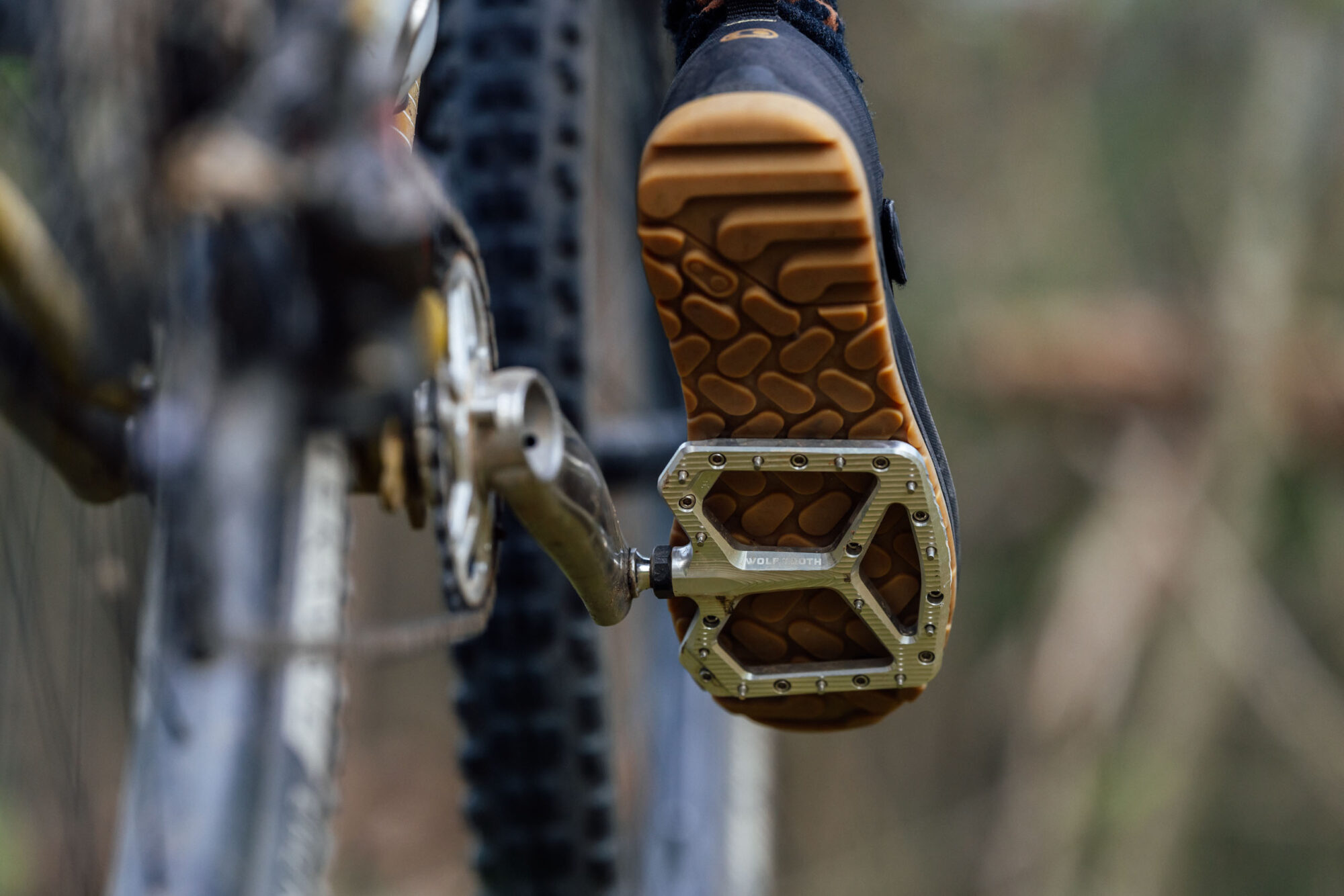
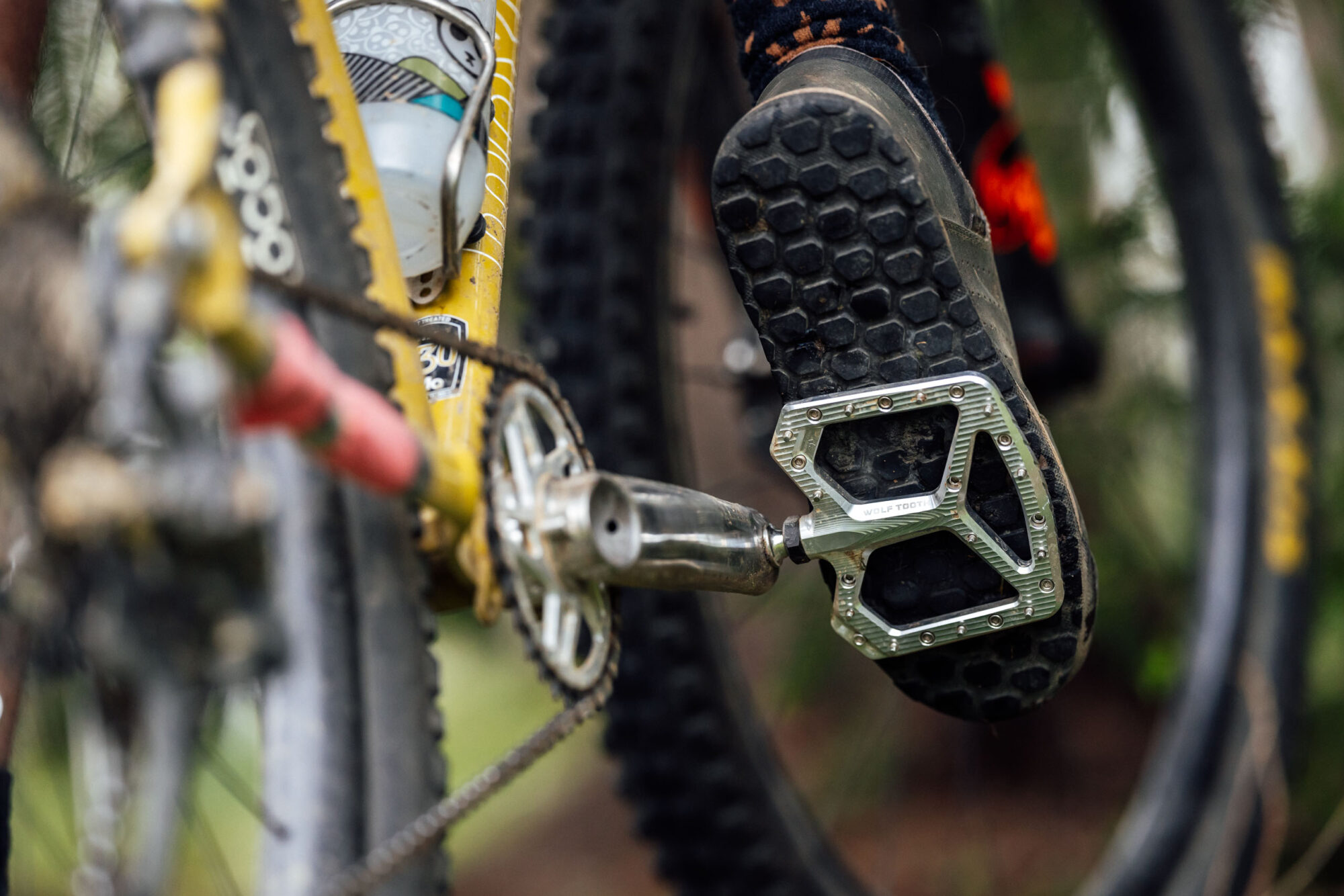
I became aware of the wider Q-factor on the first couple of rides. It didn’t bother me, but I noticed it when trying to choke my feet inboard. On that note, it seems a little easier to change your foot placement on these pedals compared to the Waveforms and there’s plenty of real estate for my size 42.5 shoe. On the flipside, I generally felt like I had to adjust a little more regularly than I normally would on the Waveform or OneUp.
I also thought that my feet were sitting at an angle while pedaling, as if the outer edge of my soles were a little downhill from the inner. I don’t think it’s a dramatic slope, and the photographic evidence above shows otherwise, but I suppose it makes sense considering the axle bulge on the inboard side. Either way, it didn’t bother me and certainly isn’t a deal breaker, but it is something I noticed. Overall, I found these pedals to be quite comfortable during a couple long rides. The large, asymmetric platform seems to provide plenty of foot support and there’s ample of room to move around.
- Model/Size Tested: Wolf Tooth Ripsaw, Raw Silver
- Actual Weight (pair): 378 grams
- Place of Manufacture: Minnesota, USA
- Price: $199.99 at Wolf Tooth
- Manufacturer’s Details: Wolf Tooth Components
Pros
- Beautiful USA-machined platform with a unique aesthetic
- Comes in my three favorite bike component colors: black, purple, and silver
- Excellent grip
- Large, comfortable platform
Cons
- Expensive
- Wide Q-factor might be an issue for some folks
Wrap Up
Whether pedals have a convex or a concave platform isn’t something that really drives my decisions. I use both interchangeably and have found a couple options on either side that have worked extremely well for me over the last few years. One of which is the Wolf Tooth Waveform, a perfectly-sized concave pedal that’s plenty grippy and has proven to be very reliable after a lot of hard use. Still, I’m glad to see Wolf Tooth expand their lineup with a second well-designed MUSA flat pedal and provide an option for folks who are attuned the nuance of different platform profiles. I really like the Wolf Tooth Ripsaw Aluminum Pedals, too, and can see them becoming a favorite. They’re beautifully machined and seem to be just as grippy as (if not more than) the Waveform. They also have a generously-sized platform that’s conducive to adjusting foot placement with ample room for different positions. They’re not inexpensive, but they’re fully repairable and come with a five-year warranty. Plus, they have a similar bearing layout to the Waveforms, so hopefully they’ll be just as durable over the long term.
Further Reading
Make sure to dig into these related articles for more info...
Please keep the conversation civil, constructive, and inclusive, or your comment will be removed.






